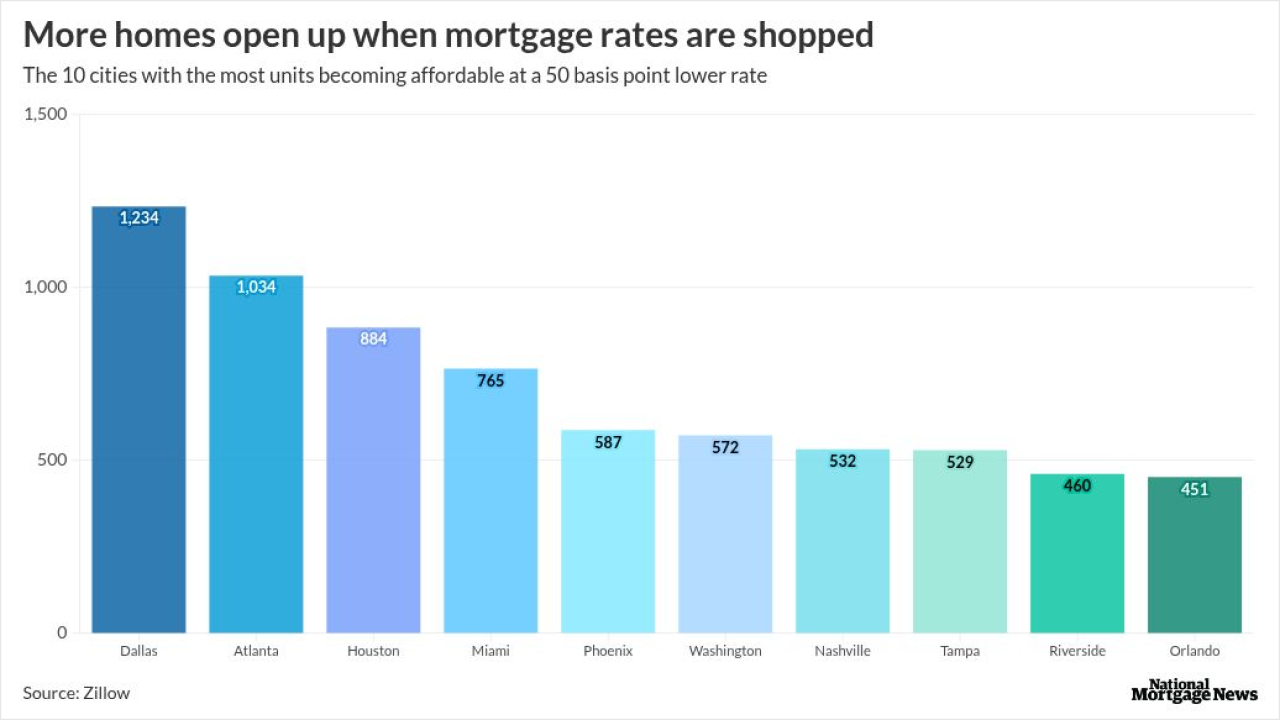Too many lenders simply gather their mortgage application data for their annual Home Mortgage Disclosure Act report and send it to their regulators without realizing its value, according to David Moffat, president and chief executive of Mortgage TrueView.
In an interview on Tuesday, Moffat said that information can be put to better use, giving lenders an in-depth understanding of their business that can help drive revenue.
Moffat says his firm has applied advanced analytics, often referred to as "big data" to unlock the information and make it more meaningful for lenders.
TrueView's analysis of the 2013 HMDA data discovered that the largest lenders are grouped in the middle percentiles with 60% to 80% approval rates on Fannie Mae and Freddie Mac purchase loans with smaller lenders in the higher percentiles.
Thirty smaller lenders with at least 5,000 applications have conventional purchase loan approval rates in the 90% range, according to Moffat.
"Perhaps some of these lenders are so large they aren't effectively developing processes that are capable of approving non-vanilla loans," Moffat said.
"Would better marketing programs or an increased investment in technology help raise approval rates?"
Meanwhile, some lenders perform better with certain products than they realize.
He cited the example of one lender that specializes in refinancing Federal Housing Administration loans, in which the data show it is very competitive with its peers. But looking at the lender's originations of Fannie and Freddie loans, it had higher approval rates despite lower volumes.
The vendor's analysis can also detect trends and outliers in parsing the Home Mortgage Disclosure Act data that included 14 million applications and 8.7 million loan approvals.
In 2013, a majority of HMDA filers reported their reasons for denying a mortgage application even though they are not required to submit such information.
Only national banks and federally charted thrifts are required to state a reason.
The analysis shows "lenders that don't provide a denial reason are starting to stand out," Moffat said in an interview.
That could draw the attention of regulators, he said.
Mortgage TrueView, based in Bountiful, Utah, also noticed that one lender would use "insufficient information" as a reason for denying an application that it classified as "incomplete" and passed over.
This large lender uses "insufficient information" at a rate more than 10 times the average. "And they were not aware of it," Moffat said.
He said that regulators are benchmarking companies so it is important for banks and other mortgage lenders to know how they stack up with their peers.
In addition, the regulators want to collect more data points. Going forward, "lenders will need to know more about their HMDA data than their regulators do," he said.
The Consumer Financial Protection Bureau is currently seeking public comments on a Home Mortgage Disclosure Act proposal that would require lenders to report the credit scores for the first time along with the loan-to-value ratio of the transaction.
"This information will allow the regulators to independently assess the underwriting decision," the TrueView CEO said.
The comment period for the agency's HMDA proposal ends Oct. 29.





